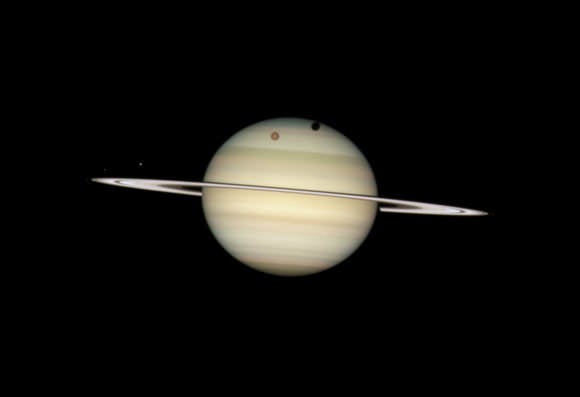It's a good thing NASA labeled the moons in this image of Saturn, because they are pretty hard to see. But they are there, keeping each other company in this Cassini spacecraft image of Saturn's night side. And as the Cassini team says, it seems fitting that they should do so since in Greek mythology, their namesakes were brothers.
In Greek mythology these three were all sons of Iapetus (another of Saturn's moons), and supposedly Prometheus and Epimetheus were tasked with creating humans. Prometheus was a pretty good sort, and gave gifts to humans like fire; Epimetheus gave humans evil – not so good. And famously, Atlas ended up having the weight of the world on his shoulders.
But in science, Prometheus the moon is about 86 kilometers across (53 miles) and is located just inside the F ring in this image, while Epimetheus is about 113 kilometers across (70 miles) and is farther from the rings, due right of Prometheus in this image. Atlas is the tiny guy (30 kilometers across (19 miles) and can be just barely seen between the A and F rings almost right below Epimetheus,
This view looks toward the unilluminated side of the rings from about 30 degrees below the ringplane. The image was taken in visible light with the Cassini spacecraft wide-angle camera on Sept. 19, 2012.
The view was obtained at a distance of approximately 2.2 million kilometers (1.4 million miles) from Saturn and at a Sun-Saturn-spacecraft, or phase, angle of 96 degrees. Image scale is 128 kilometers (80 miles) per pixel. Epimetheus has been brightened by a factor of 1.5 and Atlas' brightness has been enhanced by a factor of 3 relative to the rings and Prometheus to improve visibility.
You can see an unlabeled version
here.
 Universe Today
Universe Today
